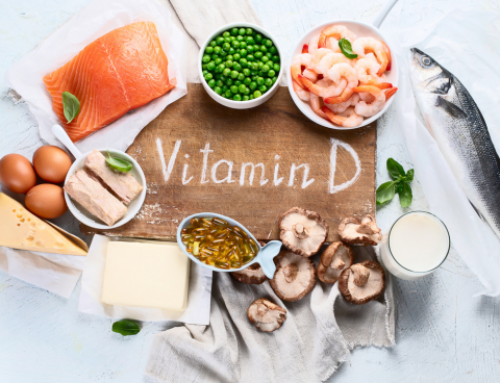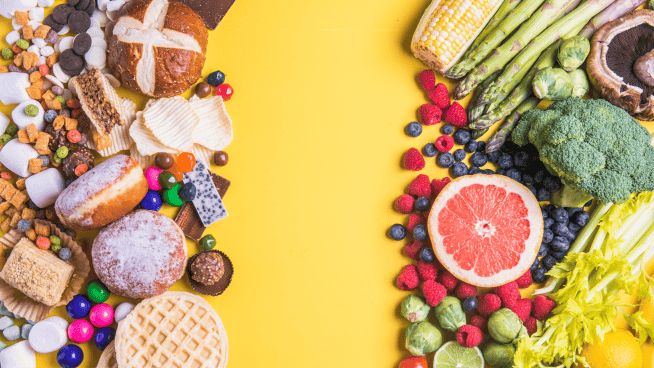The Healthiest Ways to Prepare Your Vegetables
Vegetables are absolutely among the best foods you can eat. One study found that each daily portion of vegetables reduces your overall risk of death by 16%—an absolutely astonishing number—but it isn’t too hard to believe when you know all the amazing nutrients and antioxidants packed into each and every veggie.
It’s no surprise that vegetables are phenomenal for your overall health, but you might be surprised to learn that how you prepare them has a significant effect on their nutrition. Although eating vegetables in almost any form is beneficial to your health and wellbeing, knowing how different preparations affect their benefits can help you further power up your produce. Here are some popular preparation methods and the effects they’ve been found to have on certain vegetables.
RELATED: These Surprising Veggies Fight Inflammation
Boiling
Boiling entails dropping the veggies into boiling water to cook them. Boiling vegetables has been found to drain nutrients from certain veggies while boosting nutrients in others. One reason boiling can reduce the nutrients in a vegetable is because it extracts “water-soluble vitamins.” There are nine water-soluble vitamins: folate, thiamine, riboflavin, niacin, pantothenic acid, biotin vitamin B6, vitamin B12 and vitamin C.
Several studies have observed the loss of water-soluble vitamins through boiling. For example, both broccoli and spinach lose a significant amount of vitamin C when boiled. Peas, cauliflower and zucchini all have been found to lose antioxidants when boiled.
However, boiling is better than several other preparation methods. One study concluded that boiling carrots, zucchini and broccoli was a better overall method of preparation than serving them steamed, fried or even raw. One reason is that boiling helps break down the thick vitamin-containing cell walls of these vegetables, making them easier for the body to use and absorb. The reason it’s considered an overall improvement is because although certain nutrients—like polyphenols and water-soluble vitamins—are reduced when boiled, other nutrients, like carotenoids (the nutrient that gives carrots their pigment), often increase.
To reduce the overall nutrient-draining effect boiling can have on vegetables, use as little water as possible.
RELATED: 3 Fruits and 3 Vegetables Athletes Must Eat
Steaming
Steaming is a cooking method that uses steam to cook the vegetables. It is a great way to soften the texture of foods while preserving the water-soluble vitamins you would lose through boiling. Steaming has also been found to increase the number of antioxidants in a whole host of vegetables, including mushrooms, asparagus, cabbage, peppers and carrots. Light steaming has also been found to retain the cancer-fighting compounds in cruciferous veggies such as cauliflower, broccoli, cabbage and bok choi better than preparation methods like boiling or microwaving.
Using a small amount of water (about half a cup) and steaming for a short time (5-7 minutes) is the best way to steam your veggies to retain as many nutrients as possible.
RELATED: 6 Simple Power Recipes For Vegetarian Athletes
Microwaving
Microwaving is more frequently associated with Hot Pockets and pizza rolls than with vegetables, but it is a viable method of preparation for veggies. Microwaves cook food by using short waves of energy that cause certain molecules to vibrate and quickly build up thermal energy.
Microwaving can break down some nutrients due to the high amount of heat they produce. But cooking times are often significantly shorter than other high-heat methods like boiling. This means it can better preserve certain nutrients, such as vitamin C, that break down when heated.
According to Harvard Medical School, “the cooking method that best retains nutrients is one that cooks quickly, heats food for the shortest amount of time, and uses as little liquid as possible. Microwaving meets those criteria.”
The best nutrient-saving method for preparing vegetables in the microwave is to place them in a small microwave-safe dish, add a little bit of water and throw on a tight lid. This will essentially steam your veggies from the inside out and preserve many of their nutrients very well. The one big exception is cauliflower, which inexplicably loses 50% of its antioxidants when you nuke it in the microwave.
Baking
Baking refers to a cooking method in which you place your vegetables in an oven, usually with seasoning. But baking veggies can be tricky. It comes down to what you’re cooking.
Asparagus, peppers, broccoli and artichokes retain their antioxidants fairly well when baked. But carrots, Brussels sprouts, peas, zucchini, celery, beets and garlic all have their nutrient levels reduced by baking. The antioxidant levels of a small group of veggies—including green beans, eggplant, Swiss chard and spinach—actually increase when they’re baked. If you want to bake your veggies, it’s all about picking the right veggies to bake.
Grilling
In grilling, the vegetables are placed on a metal rack over the heat of a gas or charcoal flame. Grilling doesn’t use water, which is good for preserving water-soluble nutrients. Many small veggies—such as peppers, onions, sliced tomatoes, squash and zucchini—can be grilled quickly, which is another plus if you’re looking to preserve nutrients.
Although research is scarce on the effects of grilling on vegetable nutrients, that it is a dry-heat method and can cook certain vegetables quickly bodes well for its efficacy.
Eating Raw Vegetables
If you think raw vegetables are always the best choice, you are not entirely correct. The low level of processing in raw vegetables leaves many of their natural nutrients intact, but cooking can bring out certain nutrients that aren’t available when the veggies are consumed raw.
For example, a 2002 study found that the amount of lycopene in tomatoes increased by 35 percent when they were cooked for 30 minutes. Lycopene is a strong cancer-fighting antioxidant, so that’s quite a significant number. True, eating vegetables raw is the least processed method, but it doesn’t automatically mean they’re highest in all nutrients.
The Bottom Line
Certain preparation methods change the nutrient levels of certain vegetables. But veggies are always better than no veggies—regardless of how they’re cooked. To ensure a great mix of nutrients from your vegetables, use a variety of preparation methods on a regular basis.
Feel free to mix it up. Boil, steam, bake, grill, microwave and go raw with your vegetables. By changing your preparation method frequently, you’ll ensure your body is always receiving a great blend of plant-based nutrients.
RECOMMENDED FOR YOU
MOST POPULAR
The Healthiest Ways to Prepare Your Vegetables
Vegetables are absolutely among the best foods you can eat. One study found that each daily portion of vegetables reduces your overall risk of death by 16%—an absolutely astonishing number—but it isn’t too hard to believe when you know all the amazing nutrients and antioxidants packed into each and every veggie.
It’s no surprise that vegetables are phenomenal for your overall health, but you might be surprised to learn that how you prepare them has a significant effect on their nutrition. Although eating vegetables in almost any form is beneficial to your health and wellbeing, knowing how different preparations affect their benefits can help you further power up your produce. Here are some popular preparation methods and the effects they’ve been found to have on certain vegetables.
RELATED: These Surprising Veggies Fight Inflammation
Boiling
Boiling entails dropping the veggies into boiling water to cook them. Boiling vegetables has been found to drain nutrients from certain veggies while boosting nutrients in others. One reason boiling can reduce the nutrients in a vegetable is because it extracts “water-soluble vitamins.” There are nine water-soluble vitamins: folate, thiamine, riboflavin, niacin, pantothenic acid, biotin vitamin B6, vitamin B12 and vitamin C.
Several studies have observed the loss of water-soluble vitamins through boiling. For example, both broccoli and spinach lose a significant amount of vitamin C when boiled. Peas, cauliflower and zucchini all have been found to lose antioxidants when boiled.
However, boiling is better than several other preparation methods. One study concluded that boiling carrots, zucchini and broccoli was a better overall method of preparation than serving them steamed, fried or even raw. One reason is that boiling helps break down the thick vitamin-containing cell walls of these vegetables, making them easier for the body to use and absorb. The reason it’s considered an overall improvement is because although certain nutrients—like polyphenols and water-soluble vitamins—are reduced when boiled, other nutrients, like carotenoids (the nutrient that gives carrots their pigment), often increase.
To reduce the overall nutrient-draining effect boiling can have on vegetables, use as little water as possible.
RELATED: 3 Fruits and 3 Vegetables Athletes Must Eat
Steaming
Steaming is a cooking method that uses steam to cook the vegetables. It is a great way to soften the texture of foods while preserving the water-soluble vitamins you would lose through boiling. Steaming has also been found to increase the number of antioxidants in a whole host of vegetables, including mushrooms, asparagus, cabbage, peppers and carrots. Light steaming has also been found to retain the cancer-fighting compounds in cruciferous veggies such as cauliflower, broccoli, cabbage and bok choi better than preparation methods like boiling or microwaving.
Using a small amount of water (about half a cup) and steaming for a short time (5-7 minutes) is the best way to steam your veggies to retain as many nutrients as possible.
RELATED: 6 Simple Power Recipes For Vegetarian Athletes
Microwaving
Microwaving is more frequently associated with Hot Pockets and pizza rolls than with vegetables, but it is a viable method of preparation for veggies. Microwaves cook food by using short waves of energy that cause certain molecules to vibrate and quickly build up thermal energy.
Microwaving can break down some nutrients due to the high amount of heat they produce. But cooking times are often significantly shorter than other high-heat methods like boiling. This means it can better preserve certain nutrients, such as vitamin C, that break down when heated.
According to Harvard Medical School, “the cooking method that best retains nutrients is one that cooks quickly, heats food for the shortest amount of time, and uses as little liquid as possible. Microwaving meets those criteria.”
The best nutrient-saving method for preparing vegetables in the microwave is to place them in a small microwave-safe dish, add a little bit of water and throw on a tight lid. This will essentially steam your veggies from the inside out and preserve many of their nutrients very well. The one big exception is cauliflower, which inexplicably loses 50% of its antioxidants when you nuke it in the microwave.
Baking
Baking refers to a cooking method in which you place your vegetables in an oven, usually with seasoning. But baking veggies can be tricky. It comes down to what you’re cooking.
Asparagus, peppers, broccoli and artichokes retain their antioxidants fairly well when baked. But carrots, Brussels sprouts, peas, zucchini, celery, beets and garlic all have their nutrient levels reduced by baking. The antioxidant levels of a small group of veggies—including green beans, eggplant, Swiss chard and spinach—actually increase when they’re baked. If you want to bake your veggies, it’s all about picking the right veggies to bake.
Grilling
In grilling, the vegetables are placed on a metal rack over the heat of a gas or charcoal flame. Grilling doesn’t use water, which is good for preserving water-soluble nutrients. Many small veggies—such as peppers, onions, sliced tomatoes, squash and zucchini—can be grilled quickly, which is another plus if you’re looking to preserve nutrients.
Although research is scarce on the effects of grilling on vegetable nutrients, that it is a dry-heat method and can cook certain vegetables quickly bodes well for its efficacy.
Eating Raw Vegetables
If you think raw vegetables are always the best choice, you are not entirely correct. The low level of processing in raw vegetables leaves many of their natural nutrients intact, but cooking can bring out certain nutrients that aren’t available when the veggies are consumed raw.
For example, a 2002 study found that the amount of lycopene in tomatoes increased by 35 percent when they were cooked for 30 minutes. Lycopene is a strong cancer-fighting antioxidant, so that’s quite a significant number. True, eating vegetables raw is the least processed method, but it doesn’t automatically mean they’re highest in all nutrients.
The Bottom Line
Certain preparation methods change the nutrient levels of certain vegetables. But veggies are always better than no veggies—regardless of how they’re cooked. To ensure a great mix of nutrients from your vegetables, use a variety of preparation methods on a regular basis.
Feel free to mix it up. Boil, steam, bake, grill, microwave and go raw with your vegetables. By changing your preparation method frequently, you’ll ensure your body is always receiving a great blend of plant-based nutrients.
















